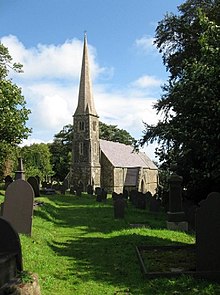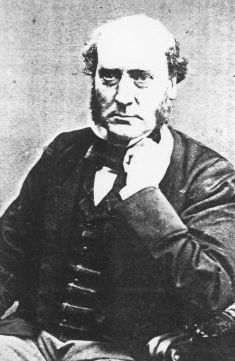
Sir George Gilbert Scott, largely known as Sir Gilbert Scott, was a prolific English Gothic Revival architect, chiefly associated with the design, building and renovation of churches and cathedrals, although he started his career as a leading designer of workhouses. Over 800 buildings were designed or altered by him.
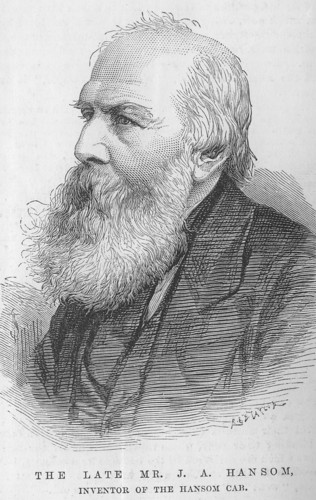
Joseph Aloysius Hansom was a British architect working principally in the Gothic Revival style. He invented the Hansom cab and founded the eminent architectural journal The Builder in 1843.

Richard Upjohn was a British-American architect who emigrated to the United States and became most famous for his Gothic Revival churches. He was partially responsible for launching the movement to popularity in the United States. Upjohn also did extensive work in and helped to popularize the Italianate style. He was a founder and the first president of the American Institute of Architects. His son, Richard Michell Upjohn, (1828-1903), was also a well-known architect and served as a partner in his continued architectural firm in New York.

Sir Arthur William Blomfield was an English architect. He became president of the Architectural Association in 1861; a Fellow of the Royal Institute of British Architects in 1867 and vice-president of the RIBA in 1886. He was educated at Trinity College, Cambridge, where he studied Architecture.

The Diocese of Saint Asaph is a diocese of the Church in Wales in north-east Wales, named after Saint Asaph, its second bishop.
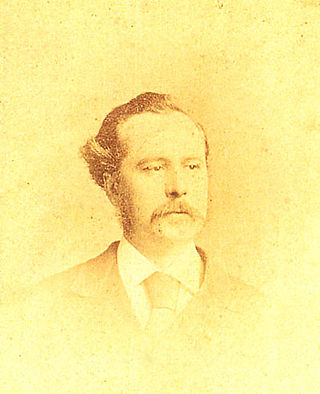
Edward Welby Pugin was an English architect, the eldest son of architect Augustus Welby Northmore Pugin and Louisa Barton and part of the Pugin & Pugin family of church architects. His father was an architect and designer of Neo-Gothic architecture, and after his death in 1852 Edward took up his practice. At the time of his own early death in 1875, Pugin had designed and completed more than one hundred Catholic churches.
Frederick Thomas Pilkington (1832-1898), pupil of his father, was a "Rogue" British architect, practising in the Victorian High Gothic revival style. He designed mostly churches and institutional buildings in Scotland. Typical of his work is the Barclay Viewforth Church in Edinburgh, a polychrome stone structure with early French Gothic details.
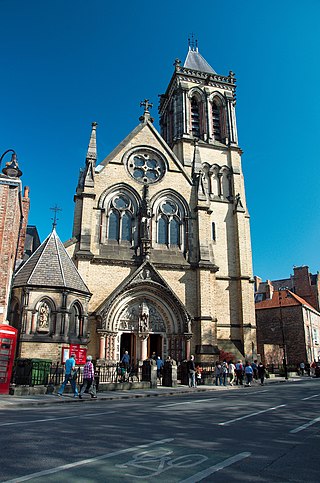
George Goldie was an English ecclesiastical architect who specialised in Roman Catholic churches.
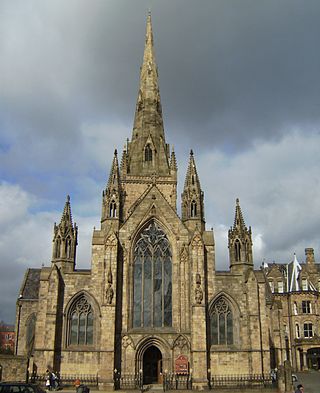
Matthew Ellison Hadfield was an English architect of the Victorian Gothic revival. He is chiefly known for his work on Roman Catholic churches, including the cathedral churches of Salford and Sheffield.
Henry Isaac Stevens FRIBA was an architect based in Derby. He was born in London, in 1806, and died in 1873. In the late 1850s he changed his name to Isaac Henry Stevens.
Joseph Clarke (1819–1888) was a British Gothic Revival architect who practised in London, England.

St Mary's Church, Pentraeth is a small medieval parish church in the village of Pentraeth, in Anglesey, north Wales. The date of construction is unknown, but is probably from some time between the 12th to 14th centuries. A church dedicated to St Mary was recorded here in 1254, but there is a tradition that there was an older church dedicated to St Geraint, an early British saint. Some medieval stonework remains in three walls of the building. A chapel was added to the south side in the 16th or 17th century. The church was altered and refurbished during the 19th century, including an extensive rebuilding by Henry Kennedy, the architect for the Diocese of Bangor, in 1882. St Mary's is still used for worship by the Church in Wales, and is one of three churches in a combined parish. Its conservation is specifically included in the aims of a Chester-based charity that promotes health and the arts in Anglesey and the north-west of England.

St Mary's Church, Llanfair Mathafarn Eithaf is a small medieval church in Anglesey, north Wales. The earliest parts of the building, including the nave and the north doorway, date from the 14th century. Other parts, including the chancel and the east window, date from the 15th century. It is associated with the Welsh poet and clergyman Goronwy Owen, who was born nearby and served as curate here. He later travelled to America to teach at The College of William & Mary, Virginia.

St Mary's Church, Llanfair-yng-Nghornwy is a medieval parish church in the north-west of Anglesey, north Wales. The date of foundation of the church, which is in the village of Llanfair-yng-Nghornwy, is unknown, but the oldest parts date from the 11th or 12th century. It has twice been enlarged: in the 15th century, when the chancel was rebuilt, and in the 16th century, when a chapel was added to the south of the chancel, separated by three arches. The tower at the west end is from the 17th century. A south porch of unknown date has been converted into a vestry, and the church is now entered through the tower.

St Mary's Church, Llanfair-yn-y-Cwmwd is a small medieval parish church near the village of Dwyran, in Anglesey, north Wales. The building probably dates from the 15th century, with some alterations. It contains a 12th-century carved stone font and a 13th-century decorated coffin lid. The bell is inscribed with the year of its casting, 1582. The historian Henry Rowlands was vicar of St Mary's in the late 17th and early 18th centuries. Maurice Wilks, who invented the Land Rover, is buried in the churchyard.

St Edwen's Church, Llanedwen, is a 19th-century parish church near the Menai Strait, in Anglesey, north Wales. The first church was founded here by St. Edwen in 640, but the present structure dates from 1856 and was designed by Henry Kennedy, the architect of the Diocese of Bangor. It contains some memorials from the 17th and 18th centuries and a reading desk that reuses panel work from the 14th and 17th centuries. The 18th-century historian Henry Rowlands was vicar here, and is buried in the churchyard. The church is on land that forms part of the Plas Newydd estate, home of the family of the Marquess of Anglesey since 1812 and owned by the National Trust. Some of the Marquesses of Anglesey, and some of their employees, are also buried in the churchyard.

St Enghenedl's Church, Llanynghenedl, is a former parish church in Anglesey, north Wales, dedicated to the son of a 6th-century King of Powys. According to the 19th-century antiquarian Angharad Llwyd, the first church in Llanynghenedl was erected in about 620. A new church was erected in 1862, replacing a building that the 19th-century clergyman and antiquarian Harry Longueville Jones noted as dating in part from the late 13th or early 14th century, based on the decorations on the south doorway. The church later fell into disuse as a result of the growth of the nearby village of Valley and the church there. In 1988, St Enghenedl's was dismantled and re-erected as an extension to St Mihangel's, Llanfihangel yn Nhowyn, so that St Mihangel's could serve as the church for RAF Valley. The former churchyard of St Enghenedl's is still visible but is now overgrown.(The churchyard is being cared for and no longer overgrown 2020 update)
Poundley and Walker or John Wilkes Poundley and David Walker were a land surveyors and architects’ partnership with offices at Black Hall, Kerry, Montgomeryshire and at Unity Buildings, 22 Lord Street, Liverpool. The partnership was established probably in the mid-1850s and was dissolved in June 1867. The partnership was involved with large country estate building projects, church and civic buildings and some civil engineering. They specialized in building model farms. J. W. Poundley was also the county surveyor for Montgomeryshire from 1861–1872. The architect, canal and railway engineer, T. G. Newnham appears have been associated with the partnership.

The Diocese of Bangor is a diocese of the Church in Wales in North West Wales. The diocese covers Anglesey, most of Caernarfonshire and Merionethshire and the western part of Montgomeryshire.

St Mary's Church was a Church in Wales parish church in Llanfair-yn-Neubwll, Anglesey, Wales. The current building was constructed in the 14th century, possibly on the site of a 12th-century church. It was restored in 1857. The church was deconsecrated in the 1970s and is a Grade II-listed building.
